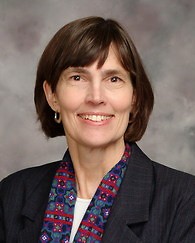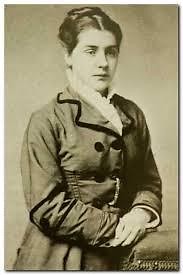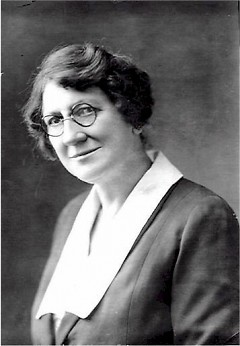Join us on a trip back in time when Grand Valley State University professor Ruth Stevens traces the history of the first women attorneys in Grand Rapids, bringing to life their intrepid journeys in a career overwhelmingly dominated by men.
This small group of pioneering women paved the way for the much larger wave of women attorneys that began practicing here in the late 1960s and 1970s.
In recognition of Women’s History Month, professor Stevens will present the findings of her research at a free program starting at 7 p.m. Thursday, March 13 at the Gerald R. Ford Presidential Museum, 303 Pearl St. NW. Reception to follow.
Entitled “Women at the Bar: The First Century of Women Attorney’s in Grand Rapids – 1870s to 1970s, the event is part of a nationwide celebration held each March to highlight an effort, movement or individual achievement related to women.
Woven into her program is the fascinating story of Elizabeth “Bessie” Eaglesfield, one of the first female graduates from the University of Michigan School of Law and the first woman to practice law in Grand Rapids. In her 1878 class of more than 300, she was one of only two women.
As one of the first 15 female attorneys in the nation, Eaglesfield began advertising for clients in the late 1870s when she hung out her shingle in downtown Grand Rapids. She was inducted in Michigan’s Women Hall of Fame last year.
Eaglesfield was followed by Ella Mae Backus, the first female attorney in the U.S. Attorney's Office for the Western District of Michigan who served as the backbone of the office for 30 years. These women were followed by a few others, such as Gale Saunders, but who are mostly unknown today.
Women had more difficulty entering the law than they did in many other professions. As lawyers and licensed members of the legal profession, the women had position within the conventional institutions of power. But even graduates of good law schools had a difficult time practicing, and many early women attorneys rarely left their desks in the back rooms of their husbands' law offices.
The first women attorneys in Grand Rapids did not fit that norm. Eaglesfield was in private practice and Backus was one of the country’s few female federal prosecutors. Their willingness to break away from traditional roles women engaged in during that time helped open doors for a tiny but growing group of female lawyers.
In the 1940s and 1950s, a handful of women attorneys kept alive the idea that women could practice law until the Baby Boomers began breaking the ceiling in the late 1960s and 1970s, with law degrees in hand. Today, of course, there are hundreds of women practicing law in Grand Rapids, including judges, federal prosecuting attorneys, and private practitioners.
Professor Stevens is the Legal Studies Coordinator at GVSU’s School of Criminal Justice. She graduated with a BA in History from Harvard University, a JD from the University of Michigan and an MLS from Wayne Street University.
Come join us for an event that might be an eye-opener for young professionals!
The event is co-sponsored by the Greater Grand Rapids Women’s History Council, the Grand Rapids Historical Society and the Gerald R. Ford Presidential Museum.
~By Sharon Hanks, GGRWHC Board Director
The Rapidian, a program of the 501(c)3 nonprofit Community Media Center, relies on the community’s support to help cover the cost of training reporters and publishing content.
We need your help.
If each of our readers and content creators who values this community platform help support its creation and maintenance, The Rapidian can continue to educate and facilitate a conversation around issues for years to come.
Please support The Rapidian and make a contribution today.


